After several of stagnation in the horror genre, films have seen a meteoric rise in terms of quality and content. From production houses falling into the trap of reproducing classic horror films, several artists have made the efforts to change the perception of the horror genre through thought-provoking ideas and some top class acting performance. In 2017, American comedian, actor and now filmmaker Jordan Peele came out with ‘Get Out’, a horror film discussing the themes of racism and subverting the white survivor trope. In similar fashion, American filmmaker Ari Aster’s came up with another terrifying horror film, ‘Hereditary’.
Produced by A24, the film follows the Graham family as they are haunted after the death of the family’ matriarch, the secretive Ellen. The film, released in June, has been hailed by many as being one of the best films of 2018. Hailed as the “scariest film” by Rolling Stone, ‘Hereditary’ is a blend of bone-chilling performances, astute direction, compact cinematography and music which aids the atmosphere with excellence.
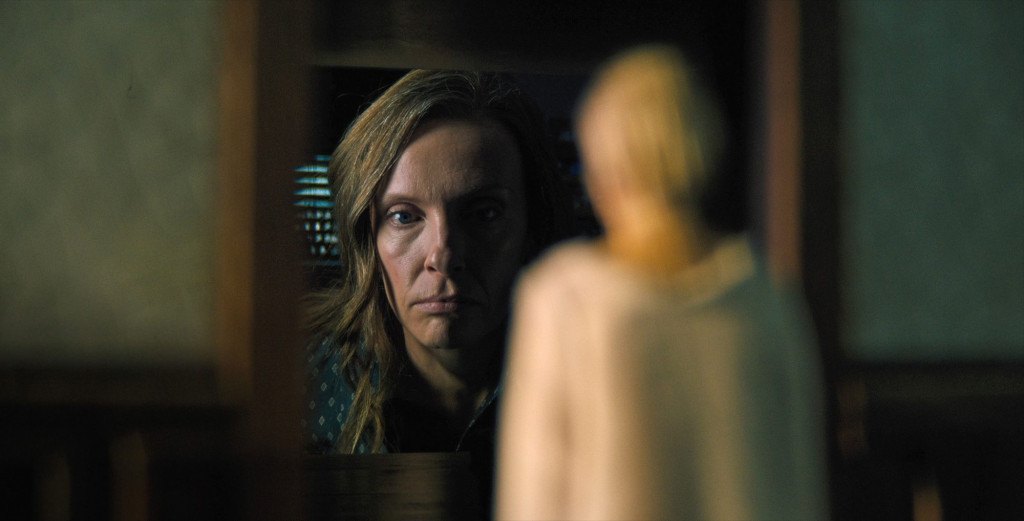
Led by the talented Toni Collette as the emotionally desolate Annie Graham, the film lays the foundation on her seat clenching performance. With her expertise, Annie’s character is fleshed out and is emotionally gratifying and terrifying as well. Complementing her are the performances of Gabriel Byrne as Steve Graham, who brings a balanced performance as the level-headed husband, Alex Wolff as Peter Graham, who manages to steer forth a challenging character as the 16-year-old son struck with guilt and of course, Milly Shapiro as Charlie Graham, who roots her performance in the depths of horror and fear.
With the brilliant cinematography by Pawel Pogorzelski, who brings the gloomy and dark ambience visually and the chilling score by Colin Stetson, director Ari Aster truly captures the horror genre with shrewdness. The interweaving themes and complex ending of ‘Hereditary’ have brought the film under scrutiny, with multiple perceptions about the narrative giving birth. For this article, I have taken up the task of understanding the ending while also discussing several themes and characters. With a complex narrative form, ‘Hereditary’ has been quite the horror ride.
The Plot
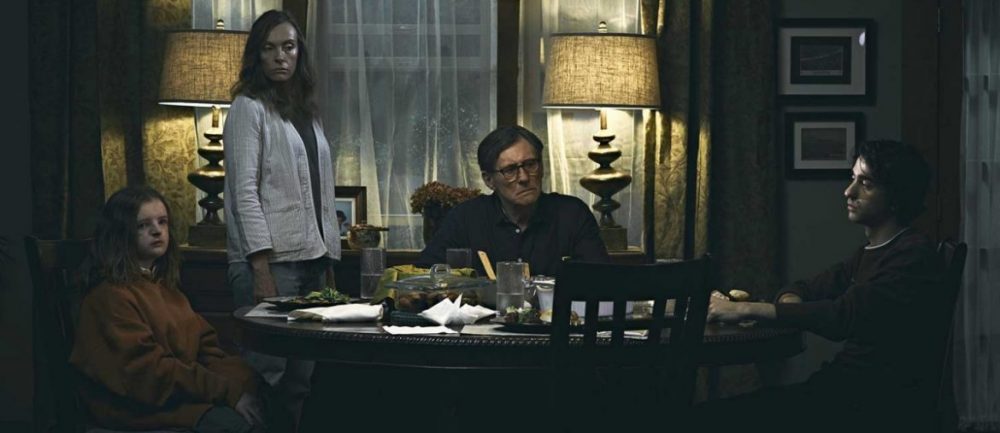
The narrative starts off with Annie Graham, a miniature artist expressing her condolences at the funeral of her mother, Ellen Leigh, who she calls secretive. Delivering a eulogy, Graham explains that the two had a troubled relationship and as a result, could never be quite close to each other. The narrative then takes a dive into the supernatural as the Graham family face inexplicable terrifying experiences as Charlie is brutally decapitated by a telephone pole during a mishap, causing more traumatic experiences. With her horrifying death, the family is ridden with trauma and grief. Peter, who was driving Annie during the mishap, is ridden with guilt and his relationship with Annie heightens with tension and strain.
The trauma causes Annie to perform a séance (an attempt to communicate with spirits) which she learns from Joan, a woman whom Annie befriends in a support group. Her attempts to communicate with Charlie horribly go wrong as she is suspected to be malevolent and dangerous.
Hoping for some advice, Annie heads to Joan’s only to learn that she isn’t there. Trying to examine the situation, Annie stumbles upon Joan’s welcome mat which resembles Ellen’s craftwork. Annie further tries to research upon to the craftwork and heads to her place only to find a photograph of Ellen and Joan and a book with information about a demon named Paimon, who desires to inhabit the body of a male host. In the attic of her house, Annie finds Ellen’s decapitated body with strange symbols on the wall written in blood.
Things turn worse as Peter’s guilt leads him to cause self-harm as he slams his head against his desk, breaking his nose. Annie, in a desperate attempt to prove the supernatural, shows Steve her mother’s body and the sketchbook. However, Steve does not believe her and accuses her of desecrating Ellen’s grave herself. Annie, in order to stop Charlie’s spirit to haunt, throws the book into the fireplace. However, Steve bursts into flames instead and Annie becomes possessed.
Peter, dosed with medicines due to the fracture awakens to find his father’s burnt body. He is then chased by Annie into the attic which is decorated with cult imagery. Levitating, Annie beheads herself with a piano wire as naked coven members look on. Peter, horrified, jumps out of the window, presumably killing himself. As his body lies on the ground, a light enters his body and he wakes up, following Annie’s levitating corpse into a tree house, built by Charlie. We find Charlie’s decapitated head crowned as it rests atop a mannequin. Joan, and other coven members and the headless corpses of his mother and grandmother bow to him. Joan, addressing him as Charlie, swears an oath to him as Paimon, stating that he has been liberated from his female host, Charlie, and is free to rule over them. So, before we jump to the ending, let’s get a brief look at the themes and character which contribute to the experience.
Paimon – The Demon
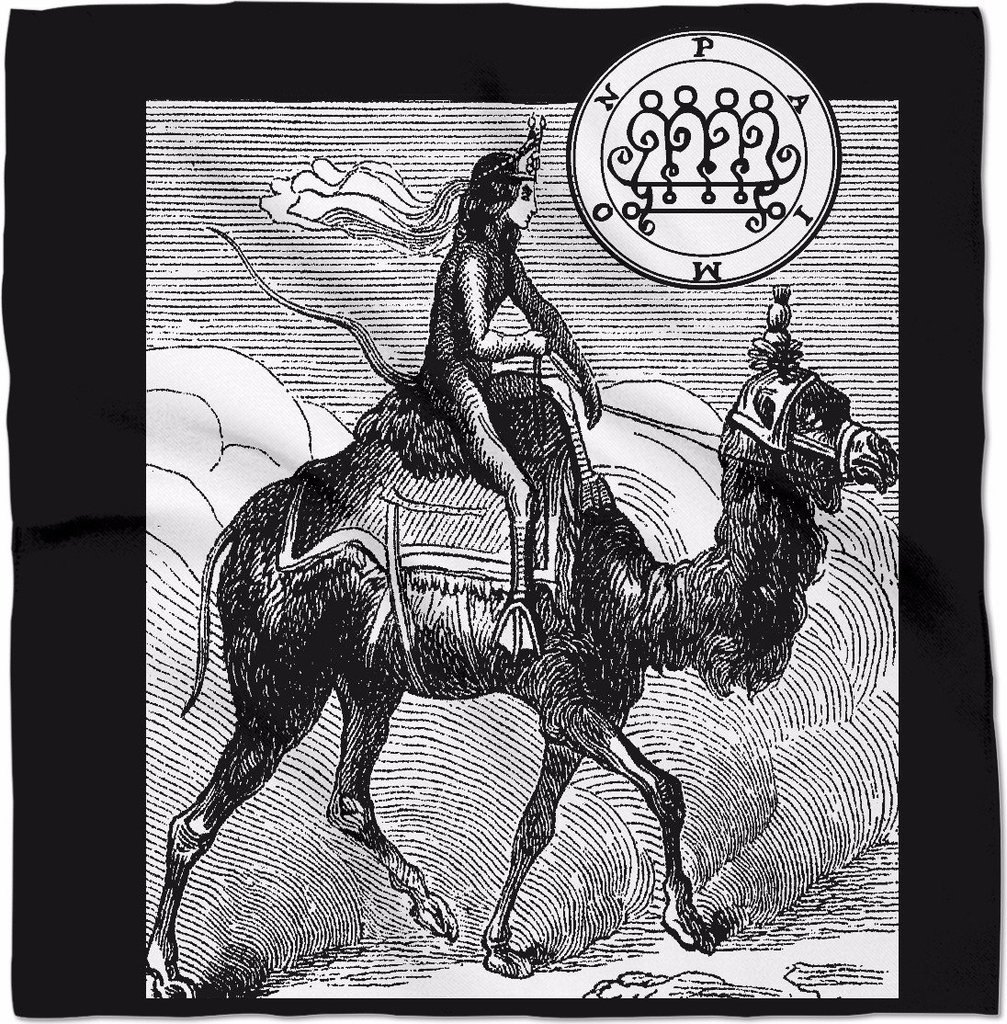
Paimon, a significant character in the study of demonology, can be traced back into the anonymously written grimoire of demonology, called “Lesser Key of Solomon”. In folklore, Paimon is believed to be riding a camel and to have an effeminate face.
Hailed as the “great king”, Paimon is referred to as one of Lucifer’s most obedient devotees. A master of art and science, Paimon is described as “the ruler of 200 legions of spirits, most of them angels”, and that “to summon him thou must make him some offering.” In addition, Paimon possesses the “knowledge of past and future events, clearing up doubts, making spirits appear, creating visions, acquiring and dismissing servant spirits, reanimating the dead for several years, flight, remaining underwater indefinitely, and general abilities to make all kinds of things (and) all sorts of people and armour appear.”
The String of Possession
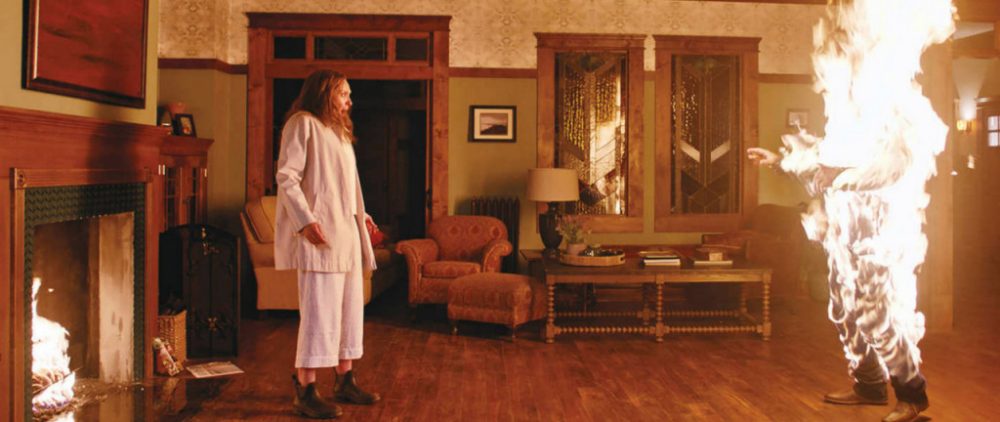
The powers of Paimon are seen have been employed in the narrative of ‘Hereditary’. As Annie performs the séance, she learns that Charlie’s spirit has become malicious. As she unsuccessfully heads to Joan’s house for advice, she learns that Joan was a friend of Ellen. As it turns out, both Joan and Ellen were members of a cult worshipping the demon Paimon, one of the “Eight Kings of Hell”.
As the narrative progresses, we learn that Paimon needs a male body to infest. Through the development of the plot, we learn that Charlie was closer to Ellen as opposed to her brother, Peter. Furthermore, Annie, while delivering a eulogy confesses that she was never close to her mother. However, Ellen played a crucial role in Charlie’s upbringing. We also learn that Charlie was meant to be a boy, as evident in the welcome mat Ellen had created with the name “Charles” embroidered on it.
One could assume that Ellen, being a cult member, intended to use Annie’s children to summon Paimon. However, it is later revealed that Paimon needed a male host, a fact which Annie validates. In a grief counselling meeting, Annie says that her brother hated their mother for trying to “put people into him.” The plan of infesting Paimon in a body was to be implemented since years. Ellen tried to complete the ritual through her son, killing him in the process and intended to do the same with Peter.
After the death of Charlie, Peter grows distant from Annie. The reason, as Peter tells Annie, is that when Peter was younger, she once tried to kill him by burring him while he was sleeping. While pleads that the episode was completely unintentional, as she was sleepwalking, another such episode completely strains their relationship beyond repair. As Peter continuously coaxes her into divulging the reason as to why she tried to kill him, Annie declares that she even tried to abort his birth.
As Charlie’s spirit turns violent, it is clear that she is the temporary host for Paimon. The instances such as Steve combusting when throws the possessed diary into the flames proves Piamon’s spirit being in complete control. When we learn that the demon needs a male host to infest, it becomes clear that Annie’s continuous attempts to stray him from Ellen and to kill him were to incapacitate Ellen to perform the ritual.
The Symbols

‘Hereditary’ explores a variety of themes, with inheritance being the interlinking one. The concept of inheritance is represented through a variety of signs, imageries and motifs. One of the first symbols is the necklace worn by both Annie and her mother. An outline of intertwining figures, the necklace interlinks the very term “hereditary”. That symbol reappears continually. It appearing in old photos, a book, embroidered welcome mats, and when Annie visits Joan, she realizes that the same embroidery appears (Ann Dowd) — a woman who befriends Annie at a grief support group. Bu the end of the film, the necklace is revealed to have a connection with Paimon.
Like the necklace signifying, Charlie too acts as a symbol of inheritance. Charlie role represents the unnerving nature of ‘Hereditary’. Being close to Ellen, Charlie acts as a carrier after her death. Throughout the film, Charlie’s behaviour is particularly chilling. She also is quite similar to her mother. Annie, as shown in the first act, is a miniature artist, and like her, Charlie too is shown to be interested in art. She draws, however unnerving the creations may be. In one scene Charlie finds the dead bird and cuts off its head to mend the figure she’s made.

Coming to point of the bird, decapitation is a recurring motif in the movie. Charlie is decapitated from a pole, Annie decapitates herself with a wire and as we see at the end of the film, headless corpses bow down to Peter.
The symbol of being headless and also fire ants seem to root from the aforementioned theme of inheritance. Charlie’s manner of death seems to spark off a chain of similar visual sequences. When she dies, Charlie’s head is manifested by fire ants. In a similar fashion, Annie finds Peter’s face to be manifested by fire ants, only to later find that it was a dream. Nonetheless, the horrifying image of fire ants devouring a human head is a recurring visual.
The Ending
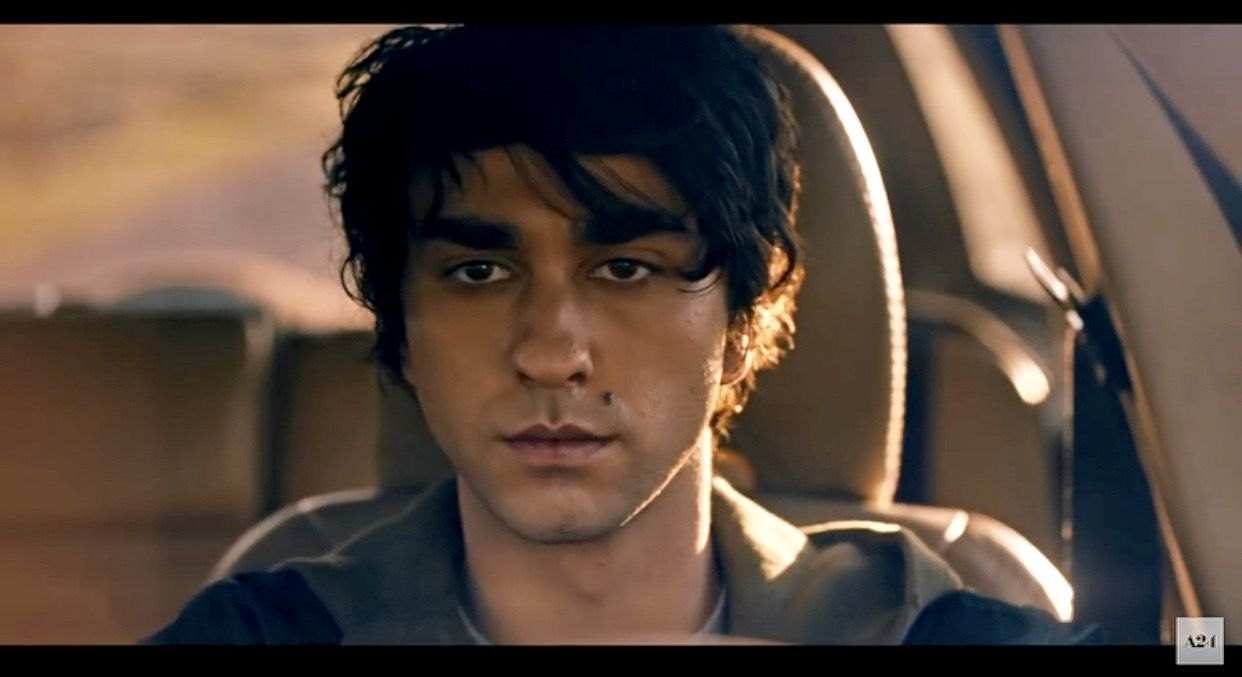
As Annie tries to burn the dairy which seemingly contains Charlie’s spirit, Steve completely combusts, and she gets possessed by the spirit of Charlie. She then pursues to Peter in a horrifying chase leading them to the attic. The scene is followed by a particularly horrific sequence where Annie is shown to be levitating and decapitating herself. The scene also the symbolical imagery, as decapitating is shown twice in the film – when Charlie eerily chops off a dead pigeons head and eventually is herself decapitated by a pole. These two scenes act as foreshadowing the idea of decapitation.
Horrified, Peter jumps out of the window, presumably killing himself. As his body lies on the ground, a light enters his body and he wakes up, following Annie’s levitating corpse into a tree house, built by Charlie. We find Charlie’s decapitated head crowned as it rests atop a mannequin. Joan, and other coven members and the headless corpses of his mother and grandmother bow to him. Joan, addressing him as Charlie, swears an oath to him as Paimon, stating that he has been liberated from his female host, Charlie, and is free to rule over them.
Essentially Peter is possessed by Paimon. As we see the decapitated members bowing to Peter, it is that he is now is worshipped by the cult of Paimon. Helmed by Joan as the top lieutenant of Ellen, the decapitated bodies of Peter’s parents have been positioned into a worshipful position. This culminated the string of possession as Peter, is also now addressed as Charlie he is also possessed by his sister’s spirit.
Read More in Explainers: Sixth Sense | Split | The Wailing

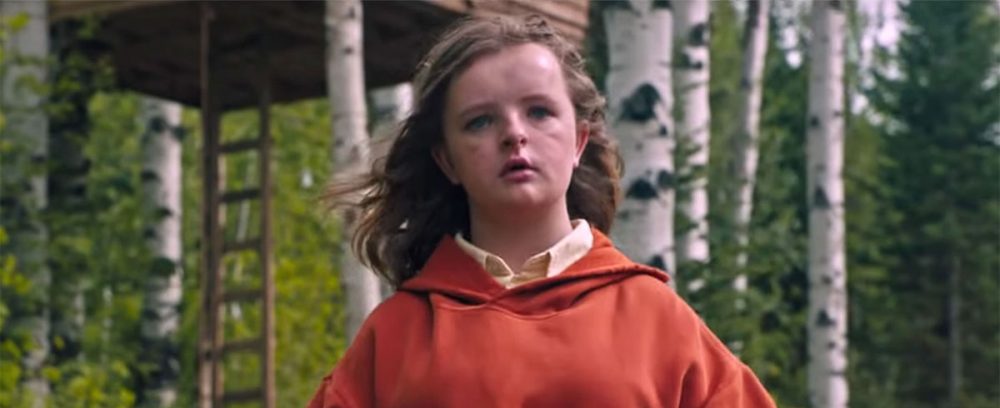
You must be logged in to post a comment.